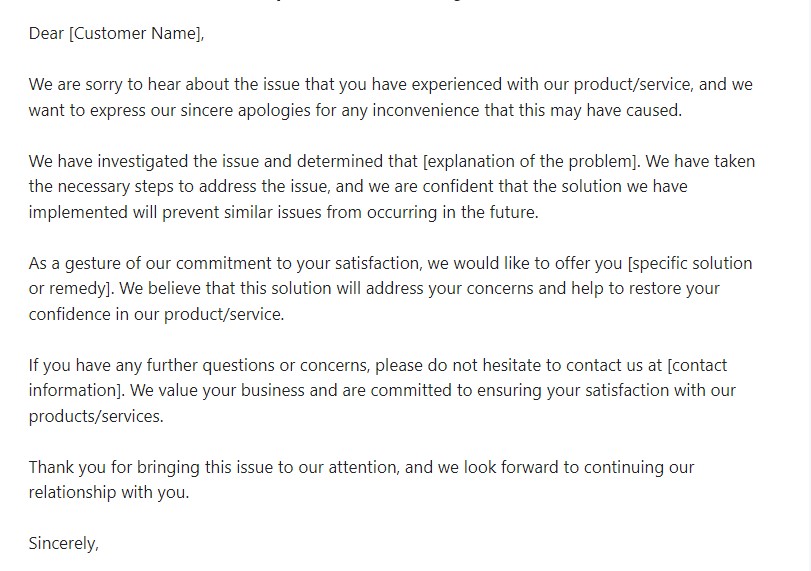Adjustment letters are written in response to a complaint or claim made by a customer or client. These letters serve to acknowledge the issue, explain how it will be resolved, and provide the customer with reassurance that the issue will not happen again. Writing an effective adjustment letter can help to retain customers and maintain a positive reputation for your business. Here are some effective strategies for writing adjustment letters for any purpose, including tips and examples.
An adjustment letter is a type of business letter that responds to a complaint or a claim made by a customer.
Here are some common FAQs about adjustment letters:
Q: What is the purpose of an adjustment letter?
A: The purpose of an adjustment letter is to acknowledge a customer’s complaint or claim and to offer a solution or an explanation for the problem. The letter should be written in a professional and empathetic tone, and should aim to resolve the issue to the customer’s satisfaction.
Q: What should be included in an adjustment letter?
A: An adjustment letter should start by acknowledging the customer’s complaint or claim, followed by an explanation of the issue and a proposed solution or remedy. It should also express empathy for the customer’s inconvenience, and provide contact information for follow-up communication.
Q: What tone should be used in an adjustment letter?
A: An adjustment letter should be written in a professional and empathetic tone. The letter should acknowledge the customer’s frustration or disappointment, and should convey a sincere desire to resolve the issue to the customer’s satisfaction.
Q: How long should an adjustment letter be?
A: The length of an adjustment letter can vary depending on the complexity of the issue and the proposed solution. However, it is generally recommended to keep the letter concise and to the point, while still addressing all of the customer’s concerns.
Q: What should be done after sending an adjustment letter?
A: After sending an adjustment letter, it is important to follow up with the customer to ensure that the issue has been resolved to their satisfaction. This can be done through a phone call or an email, and can also provide an opportunity to build a stronger relationship with the customer.
Here are some steps to follow when writing an adjustment letter:
Begin by acknowledging the customer’s complaint or claim, and express empathy for their inconvenience.
Provide an explanation for the issue, and outline the steps that have been taken to resolve the problem.
Offer a solution or remedy for the issue, which should be specific, actionable, and tailored to the customer’s needs.
Provide contact information for follow-up communication, and encourage the customer to get in touch if they have any further concerns.
Close the letter by thanking the customer for their business and expressing a desire to continue the relationship.
Make sure to proofread the letter carefully for grammar and spelling errors, and ensure that the tone is professional and empathetic.
Here is an example of an adjustment letter:
Dear [Customer Name],
We are sorry to hear about the issue that you have experienced with our product/service, and we want to express our sincere apologies for any inconvenience that this may have caused.
We have investigated the issue and determined that [explanation of the problem]. We have taken the necessary steps to address the issue, and we are confident that the solution we have implemented will prevent similar issues from occurring in the future.
As a gesture of our commitment to your satisfaction, we would like to offer you [specific solution or remedy]. We believe that this solution will address your concerns and help to restore your confidence in our product/service.
If you have any further questions or concerns, please do not hesitate to contact us at [contact information]. We value your business and are committed to ensuring your satisfaction with our products/services.
Thank you for bringing this issue to our attention, and we look forward to continuing our relationship with you.
Sincerely,
[Your Name]
